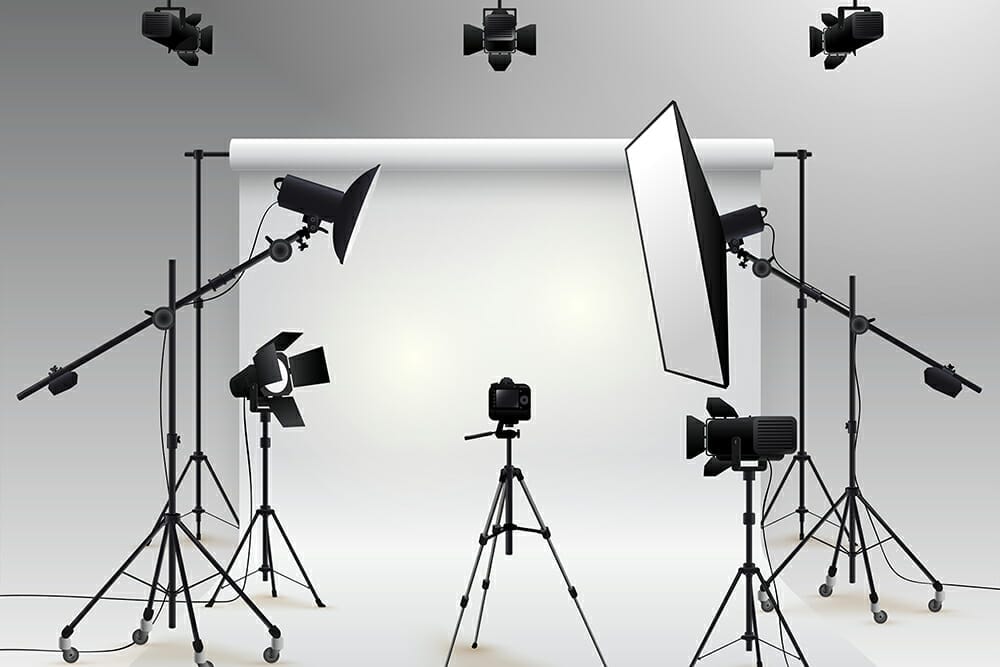What is the Best Strobe Lighting for Photography Today?
For professional photographers, choosing the right lighting setup is crucial for capturing stunning images. The question, 'what is the best strobe lighting for photography?' often arises when looking to elevate your photography game. Strobe lighting offers versatility, control, and the ability to freeze motion, making it an essential tool for various types of photography, including portrait, fashion, and product photography.
In this article, we will delve into the world of strobe lighting, exploring different types, their applications, and some top recommendations to suit your photography needs. Whether you're shooting in a studio or on location, understanding strobe lighting will enhance your skills and the quality of your work.

Understanding Strobe Lighting
Before we dissect what the best options are, let's clarify what strobe lighting is. A strobe light is a powerful and brief burst of light, used in photography to illuminate subjects effectively. Unlike continuous lighting, strobe lights can produce a significant amount of light in a very short period, allowing photographers to capture sharp images even in challenging lighting conditions.

Types of Strobe Lights
There are several types of strobe lights available, and knowing their characteristics can help you decide which one fits your style best. Here are the most common types:
1. Monolights
Monolights are self-contained units that consist of a strobe and power source in one package. They are portable and provide consistent lighting, making them ideal for studio setups. Many professional photographers favor monolights for their durability and ease of use.
2. Power Packs and Heads
This setup features separate power packs and flash heads, allowing more flexibility in lighting positioning. While they might require more setup time, they typically offer greater power and versatility, perfect for larger studios or elaborate shoots.
3. Speedlights
Speedlights are portable, battery-operated strobes that attach to the camera's hot shoe. They are very convenient for on-location shoots and can produce high-quality lighting without the need for bulky equipment.

Factors to Consider When Choosing Strobe Lighting
Now that we have an understanding of strobe lighting, lets explore the key considerations when determining the best strobe lighting for your photography needs:
1. Power Output
Strobe lighting power is measured in watt-seconds (Ws). The higher the number, the more powerful the strobeallowing you to light larger spaces or shoot with high-speed sync. For most studio work, a power output ranging from 300 to 600 Ws is sufficient.
2. Recycle Time
The recycle time dictates how quickly a strobe can recharge after firing. Look for strobes with faster recycle times, especially if you're shooting events or capturing fast-paced action.
3. Build Quality
Professional photographers understand the importance of sturdy gear. Choose strobe lights that are built to last and can withstand the rigors of frequent use.

Top Recommendations for Strobe Lighting
Here are a few top recommendations of strobe lighting systems renowned in the photography community:
1. Profoto B10
The Profoto B10 is a compact, lightweight, and powerful strobe that is perfect for both studio and location shooting. It offers a power output of 250 Ws, a rapid recycle time, and the ability to be controlled via smartphone.
2. Godox AD600Pro
The Godox AD600Pro is a robust strobe with an output of 600 Ws and a fast recycle time. This unit is particularly portable, making it a favorite among on-location photographers.
3. Elinchrom D-Lite RX 4
The Elinchrom D-Lite RX 4 is perfect for those investing in studio lighting. It features a power output of 400 Ws, exceptional build quality, and is known for its user-friendliness.
Lighting Techniques Using Strobe
Its not just the gear you use but how you use your strobe lighting that counts. Here are some lighting techniques to enhance your photography:
1. Hard vs. Soft Light
Understanding the difference between hard and soft light is essential. Strobing can create both; use softboxes or diffusers for a softer effect, while bare bulbs will produce harder light.
2. High-Speed Sync
High-speed sync allows you to shoot in bright conditions with fast shutter speeds. This feature is available on most advanced strobes and can be incredibly useful for outdoor portrait work.
3. Lighting Positioning
To achieve the best results, experiment with different lighting setups. One popular method is the 45-degree angle placement, where the light source is positioned at a 45-degree angle from your subject.
For additional insights, check out lighting placement and softbox use.
Final Thoughts on Strobe Lighting
Choosing the right strobe lighting is a pivotal decision for all professional photographers. With the right gear and knowledge of lighting techniques, you can take your photography to extraordinary levels. Know your needs, understand your equipment, and dont hesitate to experiment.
For a deeper dive into different lighting approaches, visit lighting techniques. You can also check out resources on understanding studio lighting at studio lighting.
As an Amazon Associate, I earn from qualifying purchases.

